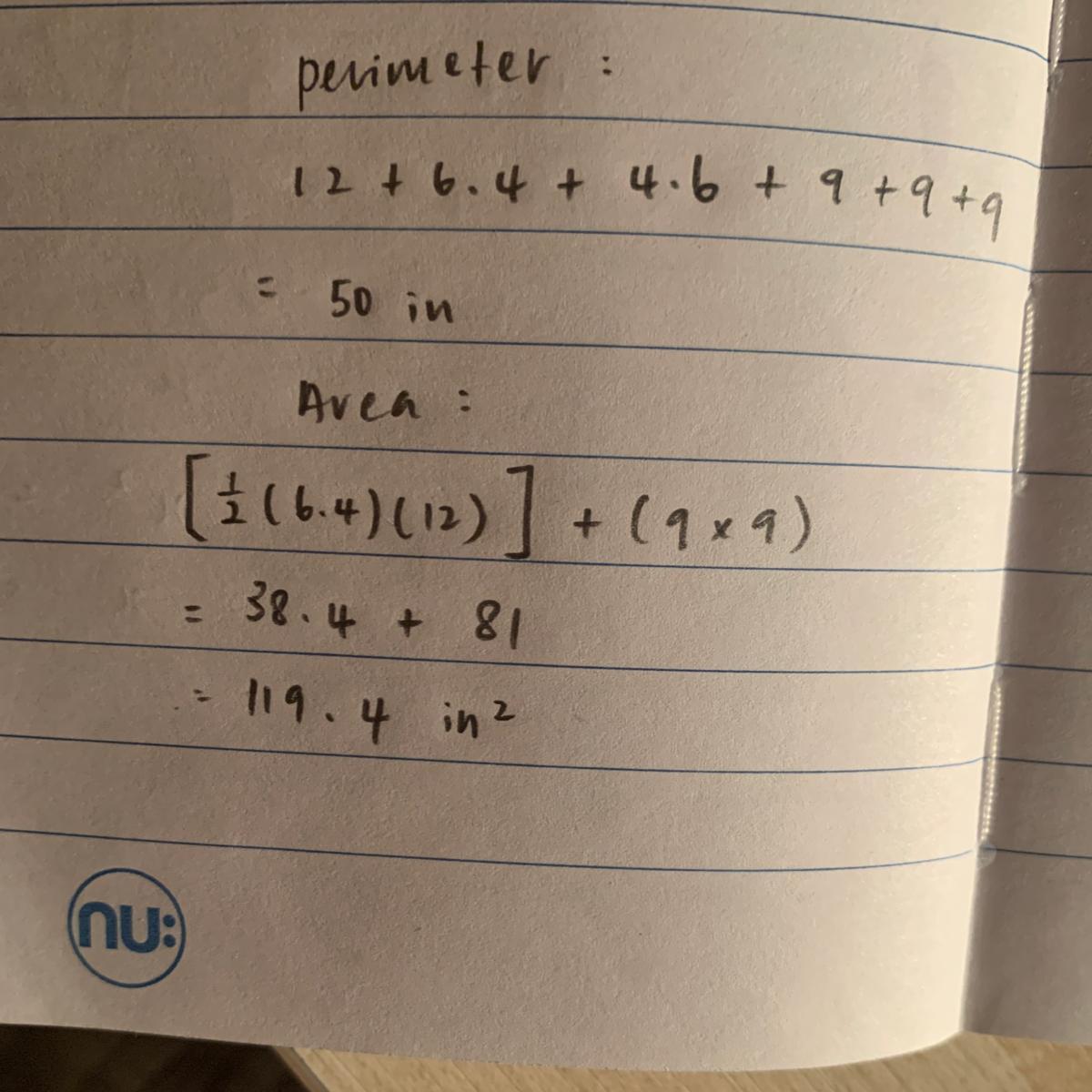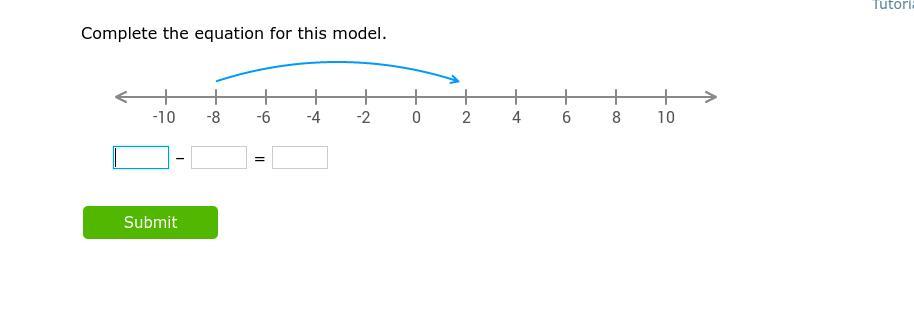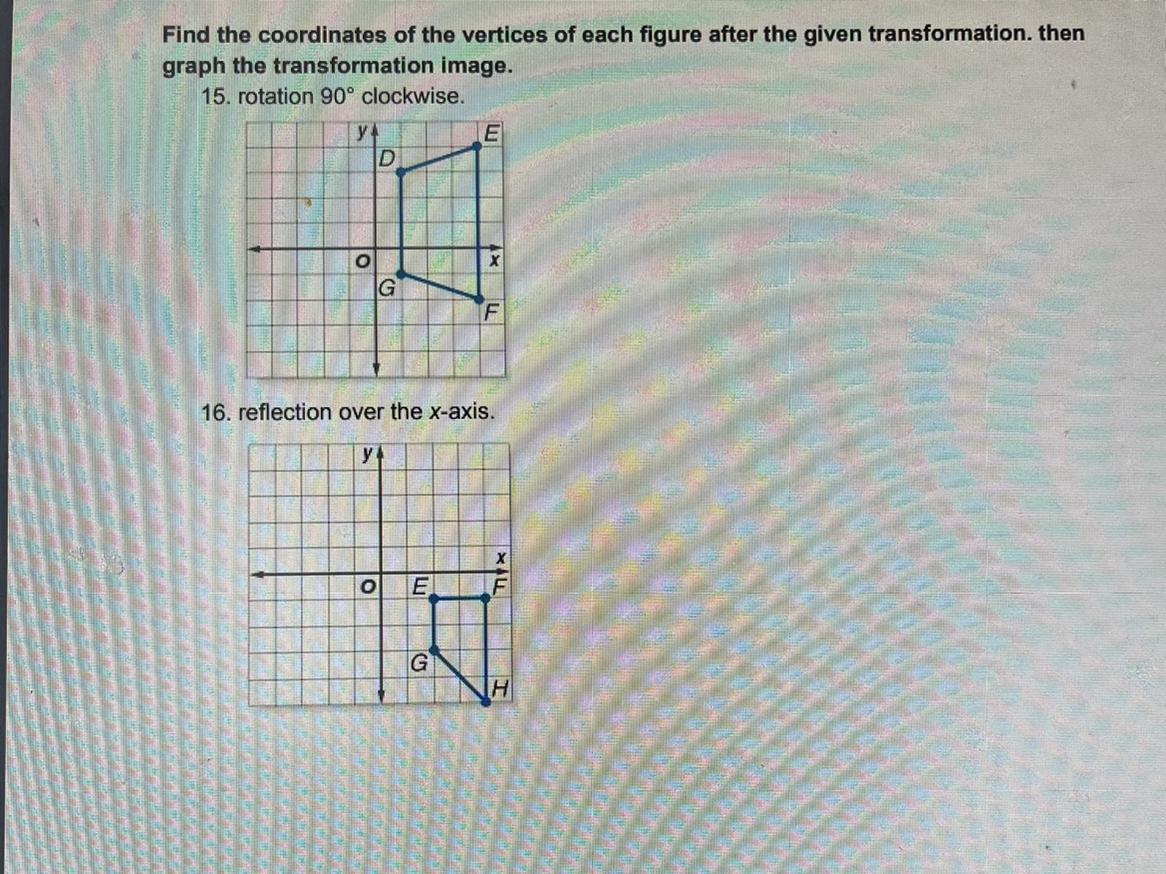5/6 = 25/? Fractions
Answers
Answer:5/6=25/blank
Step-by-step explanation:so 5/6 the top is times five forget the bottom for now just think of 5 and 25
[5x5] equals 25 so you already got the top
now for the bottom since you multiply the top by five you have to do that to the bottom so that will be [6x5] that equals 30 so you got your answer
[25/30]
Related Questions
the population of a city was 10000 in 2010 the population increases at an annual rate of 4% per year is the growth model function that represents the population of the city linear
Answers
No, the growth model function that represents the population of the city is not linear in this case.
A linear function has a constant rate of change, meaning that the population would increase by the same amount each year. However, in this scenario, the population is increasing at an annual rate of 4% per year. This means that the population growth is exponential, not linear.
To model the population growth over time, you would need to use an exponential function, such as:
P(t) = P₀ * (1 + r)^t
Where:
P(t) represents the population at time t,
P₀ represents the initial population (in this case, 10000),
r represents the annual growth rate (4% or 0.04),
and t represents the number of years.
Using this exponential function, you can calculate the population at any given year based on the initial population and the growth rate.
Learn more about compound interest here:
https://brainly.com/question/3989769
#SPJ8
f(x) = -8x – 9; find f(-3)
Answers
We will investigate how to evaluate a function given an input value.
A function is defined as a unique relationship between an input and an output variable. Furthermore, for each value of an input there is a unique value of an output. In graphical terms all functions qualify the vertical line test.
A function is expressed in terms of an independent variable also called as an input variable. It is defined over the domain of indepedent variable which expresses a set of values that are of control, whereas, the output of a function depends on its domain.
We are given the following function as follows:
\(f\text{ ( x ) = -8x - 9}\)The above function is defined for all real values of ( x ) unless specified in the context of the problem. We can go ahead and write down the domain of the above function as follows:
\(\text{\textcolor{#FF7968}{Domain:}}\text{ ( -}\infty\text{ , }\infty\text{ )}\)We are to evaluate the given function [ f ( x ) ] for one of the values from the domain expressed above i.e:
\(\textcolor{#FF7968}{x}\text{\textcolor{#FF7968}{ = -3}}\)The operation of evaluating a function can be summarized as a substitution of the input value in the function's relationship and simplifying the result as follows:
\(\begin{gathered} f\text{ ( -3 ) = -8}\cdot(-3)\text{ -9} \\ f\text{ ( -3 ) = 24 - 9} \\ \textcolor{#FF7968}{f}\text{\textcolor{#FF7968}{ ( -3 ) = 15}} \end{gathered}\)The above result of the function evaluation is as follows:
\(\textcolor{#FF7968}{15}\)
A concave octagon
B convex quadrilateral
C concave quadrilateral
D convex octagon

Answers
Answer: concave
Step-by-step explanation:
What is one plus sixety-four
Answers
Answer:
65
Step-by-step explanation:
Answer:
like 149
Step-by-step explanation:
big brain
Given sequence 2,5,8
Prove that none of the terms of this sequence are perfect square.
Answers
Answer:
To prove that none of the terms of the sequence 2, 5, 8 are perfect squares, we need to show that no integer exists such that its square equals 2, 5, or 8.
First, let's consider 2. We can start by assuming that there exists an integer n such that n^2 = 2. However, this leads to a contradiction, because the square of any integer is always non-negative, so n^2 cannot be equal to a negative number like 2. Therefore, there is no integer n such that n^2 = 2, and 2 is not a perfect square.
Similarly, let's consider 5. Again, assume that there exists an integer n such that n^2 = 5. However, this leads to another contradiction, because the square of any integer is always either a perfect square or a number that is slightly larger than a perfect square (for example, 4^2 = 16 and 6^2 = 36). Since 5 is not a perfect square, it cannot be equal to the square of any integer, and there is no integer n such that n^2 = 5.
Finally, let's consider 8. We can again assume that there exists an integer n such that n^2 = 8. However, this leads to a contradiction, because the square of any even integer is always a multiple of 4 (for example, (2n)^2 = 4n^2). Since 8 is not a multiple of 4, it cannot be equal to the square of any integer, and there is no integer n such that n^2 = 8.
Therefore, we have shown that none of the terms of the sequence 2, 5, 8 are perfect squares.
PLEASE HELP QUICKLY AS POSSIBLE THANK YOU :)

Answers
Answer:
D (4,11)
Step-by-step explanation:
Answer: it’s d
x is just going up by 1 and y is going up by 2
In complete sentences, answer the following question.
What are the elements of a body paragraph?
Answers
I hope this helps!! i used different words than the other person just in case.
If 3 is added to the absolute value of the product of a number and –9, the result is 4.
Answers
Answer:
± (1 ÷ 9)
Step-by-step explanation:
Data provided in the question
Since 3 is added to the absolute value and -9
The result is 4
Now this information should be transformed in a mathematical equation
Let us assume be x so the product of the number and -9 be -9x
Fo rthe absolute value we use the mode. Thus the required expression is:
3 + |-9x|
Given that the result is 4
So, it would be
3 + |-9x| = 4
Now Solving the above equation which is given below:
|-9x| = 4-3
|-9x| = 1
here we will remove the mode by introducing ± sign which is shown below:
-9x = ± 1
-9x = 1 or -9x = -1
x = -1/9
or
x = \(\frac{1}{9}\)
Therefore, the value of x is ± (1 ÷ 9).
yo can someone please help me out. school is rlly stressful and i just need help. the question is “find the perimeter and area of each figure. use 3.14 for pi when needed.” the work is on composite figures. tysm <3

Answers

What is the domain for the graph below?

Answers
The domain of the given graph is All real numbers except 0.
Domain:
Domain refer the set of inputs accepted by the function. Basically, the set of all x axis values are the domain for the function.
Given,
Here we have the graph.
And we have to find the domain for the given graph.
While we looking into the given graph we have identified that there are two line are passing on the coordinate plane.
And the graph shows a particular case of a hyperbola, which is continuous for all values of x, except the value of x where discontinuity exists. Therefore, the domain of the function is all real numbers except 0.
To know more about domain here.
https://brainly.com/question/28135761
#SPJ1
at a baseball game a vender sold a combined total of 141 sodas and hot dogs. the number of sodas was 51 more than the number of hotdogs sold. Find the number of sodas sold and the number of hot dogs sold
Answers
Hot Dogs: 45
The system of equations is graphed on the coordinate plane.
y=x−1
y=−2x−4
Enter the coordinates of the solution to the system of equations in the boxes.

Answers
Answer:
(-1,-2)
Step-by-step explanation:
Hello!
The solution to the system is at the intersection between the two graphed lines.
Remember that a coordinate is written in (x,y) format, so we take the x-value of the points and the y-value of the point.
The coordinate is (-1, -2).
Step by step
You have two equations
y= x -1 (we will call equation A)
y= -2x-4 (we will call equation B)
Substitute equation A for the “y” value in equation B
x-1 = -2x -4
We need to isolate x to one side of the = so first we will add 1 to both sides
x-1+1 = -2x -4 +1
Combine like terms
x = -2x -3
Now add 2x to both sides
2x + x = -2x +2x -3
Combine like terms
3x = -3
Now solve for x by dividing both sides by 3
3/3x = -3/3
X= -1
Now we can solve for “y” by substituting our “x” value into equation A
y = -1 -1
y = -2
Now you can check your work by substituting your x and y values into with equation
A (-2) = -1 -1
A -2 = -2
B -2 = -2(-1) -4
B -2 = -2
Problem solved and graph is correct - see attached

Can someone plz help me with this asap I would really appreciate it

Answers
That should be correct
A fancy restaurant put dishes of butter at each table. They divided 4/5 of a kilogram of butter evenly to put 1/5 of a kilogram in each dish. How many butter dishes did they fill?
Answers
Answer: 4
This problem requires basic division. If the restaurant divided 4/5 kg of butter with 1/5 kg on each dish, you would need to compute 4/5 divided by 1/5.
4/5 ÷ 1/5
Using the "KFC" method, or Keep, Change, Flip, you would keep the first number (in this case, 4/5), change the division sign, and flip the fraction to 5/1, or 5. We now have this:
4/5 x 5
To compute this equation, you must multiply the numerators of both of the numbers together. In this case, you would compute (4x5)/5, resulting with 20/5, or 4.
You can check this answer by re-multiplying the numbers together. 1/5 kg of butter per dish, multiplied by the total amount of dishes, 4, you would result in the original 4/5 kg of butter.
Hope this helps!
How much interest must you deposit in an account to earn $400 per year at 2% simple interest?
Answers
time is measured in seconds

If diego can type 140 words in give minutes
how many words can he type in 15 minutes
Answers
Answer:
2100
Step-by-step explanation:
Sally and Suzie both agree that m∠A + m∠B = 180⁰.
Sally claims ∠A and ∠B are supplementary.
Suzie claims ∠A and ∠B are not supplementary because they are not adjacent.
Who is correct?

Answers
Explanation:
The angles do not need to be touching, or adjacent, for them to be supplementary. They simply need to add to 180 degrees.
We have 70+110 = 180, so that proves the angles are supplementary. They can be rearranged to glue together to form a straight angle.
If the angles were supplementary and adjacent, then we can consider them as a linear pair. This is possibly what Suzie might be thinking about.
The radius of a circle is 19 cm. Find the area
Answers
Answer: 1134.11
A=3.14*r^2
Step-by-step explanation:
Answer:
a ≈ 1134.11 cm2
Step-by-step explanation:
The formula:
\(a=\pi r^{2}\)
\(a=\pi (19)^{2} =361\pi\)
\(a=1134.11cm^{2}\)
Hope this helps
1. How do you know if you should multiply or divide when converting measurements?
Answers
Step-by-step explanation:
when using similar processes to converting from smaller to large units. When converting a large unit to a smaller one, you can multiply;when you convert a smaller unit to large one, you can divide.
Quadrilaterals and other polygons

Answers
Answer:
B
Step-by-step explanation:
could you help me with this? its an ss here:

Answers
When subtracting a negative number, you will actually add. You can double check this by counting on the number line. Make sure you count by 2.
25 + 14 ÷ ( 5 - 3 )
its urgent please
Answers
Answer:
Step-by-step explanation:
25 + 14 / (5-3)
25 + 14 / 2
25 + 7
32
1. The demand of calculators when its price per unit is Rs 1200,is Rs 4000. When the price increases to Rs 1500, only 3000 calculators are demanded. a.Find the demand equation in the form of p = f(Q)
b.Obtain the number of calculations demanded when the price per unit calculators is Rs 1650
c. If 4500 calculations are demanded, what should be the price per unit of calculator?
Answers
a) the demand equation in the form of p = f(Q) is p = -10/3Q + 14533.33
b) when the price per unit of calculators is Rs 1650, approximately 3865 calculators are demanded.
c) when 4500 calculators are demanded, the price per unit should be approximately Rs 3010.
To find the demand equation in the form of p = f(Q), we need to determine the relationship between the price per unit (p) and the quantity demanded (Q) based on the given information.
Let's use the two data points provided:
Point 1: Price (p1) = Rs 1200, Quantity (Q1) = 4000
Point 2: Price (p2) = Rs 1500, Quantity (Q2) = 3000
First, we calculate the slope of the demand equation using the formula:
Slope = (Q2 - Q1) / (p2 - p1)
Substituting the values, we get:
Slope = (3000 - 4000) / (1500 - 1200) = -1000 / 300 = -10/3
Next, we use one of the data points and the slope to find the y-intercept (b). Let's use Point 1:
p1 = Rs 1200, Q1 = 4000
Using the equation of a straight line (y = mx + b), we can rearrange it to solve for b:
b = y - mx
b = 1200 - (-10/3)(4000) = 1200 + 40000/3 = 1200 + 13333.33 = 14533.33
Therefore, the demand equation in the form of p = f(Q) is:
p = -10/3Q + 14533.33
To find the number of calculators demanded (Q) when the price per unit is Rs 1650, we can rearrange the equation and solve for Q:
1650 = -10/3Q + 14533.33
-10/3Q = 1650 - 14533.33
-10/3Q = -12883.33
Q = (-12883.33) / (-10/3)
Q = 12883.33 * 3/10
Q ≈ 3865
Therefore, when the price per unit of calculators is Rs 1650, approximately 3865 calculators are demanded.
Now, let's determine the price per unit (p) when 4500 calculators are demanded. We rearrange the equation and solve for p:
4500 = -10/3Q + 14533.33
-10/3Q = 4500 - 14533.33
-10/3Q = -10033.33
Q = (-10033.33) / (-10/3)
Q = 10033.33 * 3/10
Q ≈ 3010
Therefore, when 4500 calculators are demanded, the price per unit should be approximately Rs 3010.
By using the slope-intercept form of a linear equation and the given data points, we can determine the demand equation and solve for various scenarios, including finding quantities demanded at specific prices and determining the appropriate price for a given quantity demanded.
Know more about quantity here:
https://brainly.com/question/13270106
#SPJ11
can y’all please help me

Answers
Answer:
15. d(1,3) e(4,4) g(1,-1) f(4,-2)
16. e(2,-1) f(4,-1) g(2,-3) h(4,-5)
Step-by-step explanation:
These are the coordinates to each point (x,y)
I hope this helps!!
Hello how to solve this can anyone help

Answers
Step-by-step explanation:
f(1)= 1²+4×1=5
f(2)=2²+4×2= 12
f(3)=3²+4×3=21
domain
1,2,3
range
5,12,21
Q.1 List all perfect squares between 0 and 400.
Thxxxx

Answers
Answer:
0,1,4,9,16,25,36,49,64,81,121,144,169,196,225,256,289,324,361,400
Prove that if n is an odd integer, then n^2 + 1 is an even integer.
Answers
n^2 will still give you an odd integer, but if you add one it will be an even integer
The Venn diagram below shows information about the number of items in sets T and V.
An item is chosen at random.
Given that P(TIV) = j

Answers
The value of x from the venn diagram if P(T | V) = 1/5 is 16
How to determine the value of x
From the question, we have the following parameters that can be used in our computation:
The venn diagram
From the venn diagram, we have the following probability values
P(T | V) = (x - 4)/(3x + x - 4)
Evaluate the like terms
So, we have
P(T | V) = (x - 4)/(4x - 4)
From the question, we have
P(T | V) = 1/5
This means that
(x - 4)/(4x - 4) = 1/5
When evaluated, we have
x = 16
Hence, the value of x is 16
Read more about probability at
https://brainly.com/question/31649379
#SPJ1
please answer need help

Answers
What is the area of this triangle? Enter your answer in the box. in² Triangle. Base is labeled 10 inches. A segment extending from the opposite vertex making a right angle with the base is labeled 4 inches.
Answers
Answer:
20 in³
Step-by-step explanation:
Area of a triangle is half the base times the perpendicular height:
A=0.5bh
=0.5*10*4
=20